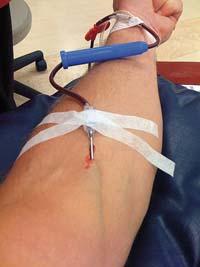A successful gene therapy in the treatment of a blood disease

A 18-year-old boy affected by beta-thalassemia has been without blood transfusions for three years. The young man has participated in a research led by the Paris-Descartes University and thanks to his gene therapy he has managed to recover his health. It has been one of the few gene therapies of human success.
In patients with beta-thalassemia, genes that form a certain part of hemoglobin, beta-globin, are defective. Therefore, they should receive blood transfusions periodically to supply this intrinsic lack. The only effective therapy to combat this disease is stem cell transplantation today, but rarely are compatible donors.
In this case, effective treatment has been obtained through gene therapy. The hematopoietic stem cells of the patient, that is, that form blood cells, were extracted from the bone marrow. Subsequently, as usual in gene therapies, the cells grew and joined the viruses that had introduced the beta-globin functional gene. By infecting cells, viruses include genes of interest in the cell genome.
Subsequent chemotherapy destroyed the patient's defective hematopoietic stem cells and introduced those produced by gene therapy. A year later he needed no other transfusion.
Although they recognize that this case has been a success, many researchers have considered an exception. A researcher at King's College London, in the journal Nature, for example, has pointed out that this is an "absolutely atypical event" and that it will be "very difficult" to achieve the same results in other patients.
Buletina
Bidali zure helbide elektronikoa eta jaso asteroko buletina zure sarrera-ontzian











